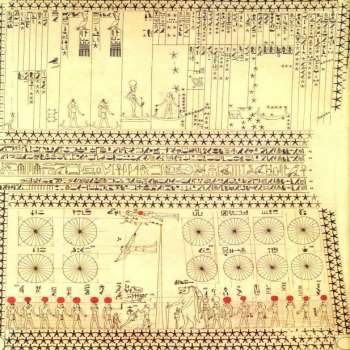Ancient Egypt and Precession
Definition: [Astrological Ages] Did the Ancient Egyptians understand the Movement of the Ages? Nowadays they are claimed to have possessed this knowledge in a number of popular books which have appeared, subsequent to the popularisation of Jung's Astrological Age concept [see Publishing and Precession]. In contrast amongst academic archeological circles the answer is:
Answer: Almost certainly not.
Facts which Indicate the Ancient Egyptians Would Not Have Had a Movement of the Ages Concept: I'll define Ancient here to mean anytime in Egyptian history up to the fall of the Egyptian New Kingdom in 1070 BC.
|
* There is essentially no
evidence that the Egyptians practised astrology prior to what we now call the
Late Period [712 -332 BC] of their history, and there is hardly any evidence
even in the Late Period. [In contrast we have huge amounts of information
relating to their astral religious practices from before this time.] |

The Northern [Bottom] and Southern [Top] Panel 'Decan Chart' from the Tomb of Senmut [c 1500 BC]. [In reality this panel is about 4 m long.] This is the earliest Egyptian 'decan chart,' that appears on a tomb, rather than inside a coffin. It is also the first 'decan chart' that has associated planets. The two left hand figures in the boats in the south panel have been identified by Egyptologists as representing what we would now call the planets Saturn and Jupiter. The figure in the boat next to the them is the star we now call Sirius, but for the Ancient Egyptians was related to Isis. As always in the decan system, she is occupying the 36th and last decan. [The decans read right to left.] The decans follow the fairly standard order seen in decans dating back to their first known instance in the Egyptian record around 2100 BC in the Middle Kingdom. However, it should be noted that Saturn and Jupiter are not located in decans, i.e. the decans are not being used by the Egyptians to record the position of Saturn and Jupiter in particular places in the heavens, as the Zodiac Signs in a modern astrology chart would be used to do for planets. This is a later Babylonian idea that was still a thousand years in the future. The decan system was actually used as a clock for time keeping in the night hours and through the year - modern Egyptologists call them Egyptian sidereal clocks. The Star of Osiris. As an example of how our modern mind set imposes concepts on the Ancients take the example of Osiris. You can find written frequently that he's associated with the constellation Orion. In fact, the ancient Egyptians believed that the stars of the sky represented the bas of individual souls, i.e. one star meant one soul. Deities were associated with the heavens, but only with single stars, such as, as mentioned above, Isis with the star we now call Sirius. In the Senmuts tomb, for example, Osiris is associated with the star known as hr rmn s3hu, a star under the arm of what we would now call Orion. Other stars in what we call Orion are associated with the god Horus or with Horus' children. |
Publishing and Precession after Jung...
| 6: | Publishing and Precession after Jung... |
| 6a: | Ancient Egypt and Precession |
| 6b: | Ancient Babylonia and Precession |
| 6c: | Mithraism and Precession |
| 6d: | 2012 and the Maya Calendar |
© Dr Shepherd Simpson, Astrological Historian
Historical Astrology
See the new Astrological Index for the meaning of other astrological words and phrases